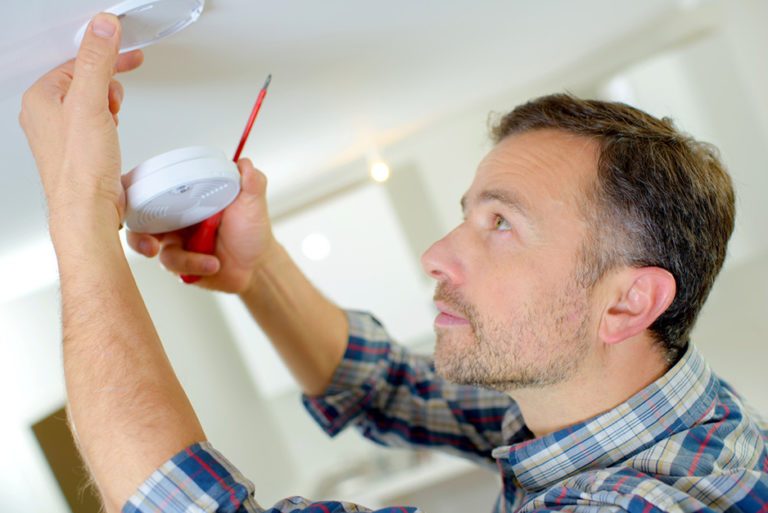Each year during Fire Prevention Week in early October, the National Fire Protection Association chooses a theme for their education efforts. For instance, this year the slogan was “Every Second Counts: Plan 2 Ways Out!” In 2016, however, they chose to educate on smoke alarm safety, an important topic which bears revisiting.
Smoke alarms, also known as smoke detectors, are a critical element of life safety in your home, and there are numerous best practices to consider when installing them. You should have one placed in every bedroom, one in each hallway, and at least one on each floor of your home, including the basement.In addition, one should also be installed near any heating source. For the best efficiency, smoke detectors should be mounted on the ceiling, at least a foot away from any corners. If it is possible to interconnect your smoke alarms, do it. That way, if one goes off, it triggers the sirens in all of them.
Because many smoke detectors are battery powered, another good practice is to test the batteries every month and replace them once each year. Not only does this ensure your devices are in good functioning condition, it also keeps you from having to deal with the low battery signal, which will inevitably start chirping in the middle of the night!
Did you know age matters when it comes to smoke alarm safety? A smoke alarm should never remain in use for longer than ten years. Some are even equipped with an end-of-life signal to let owners know when it is time to replace them. You can determine the age of your smoke alarm by removing it from the wall or ceiling and checking the manufacturing date on the back of the casing. If you have alarms in your house that were manufactured over ten years ago, they should be replaced with new ones. Keep in mind a smoke alarm’s manufacturing date may be older than the date it was installed, ie – your home may have been built in 2003, but your smoke alarms could have been manufactured in 2001.
Recent studies have shown that some people, children in particular, don’t respond to the sound of a smoke alarm when they are sleeping. For this reason, triggering your alarm so children are familiar with the sound is suggested. It’s also recommended to conduct drills, especially while kids are sleeping, to train their brain to respond to the noise.
For more great tips on smoke alarm safety and general fire safety tips, such as how to make a fire escape plan, top causes of fire, and more, visit the NFPA’s public education website.
